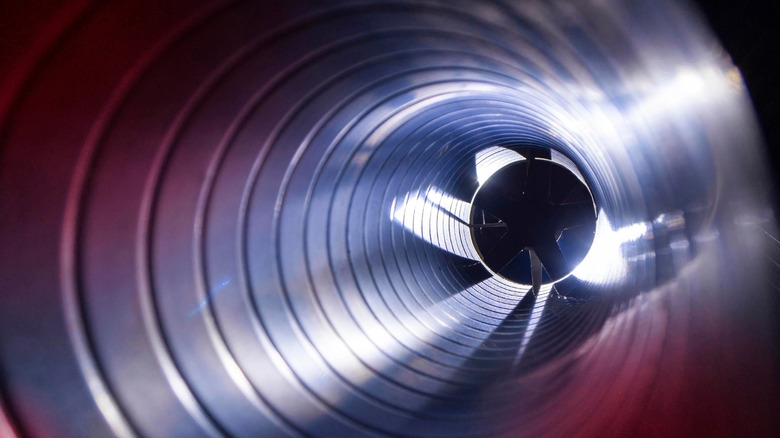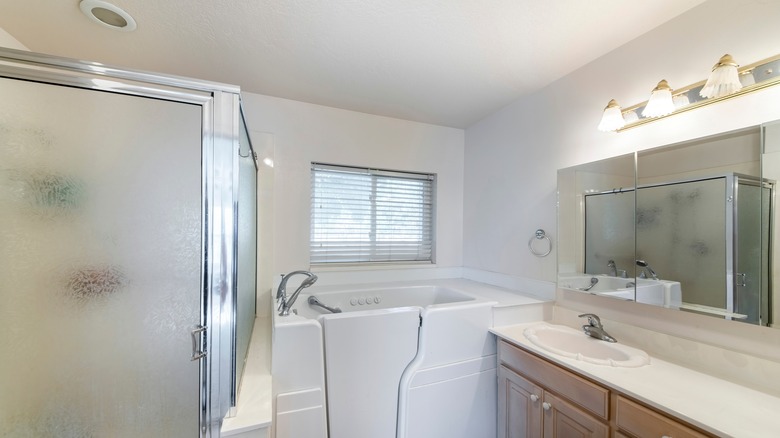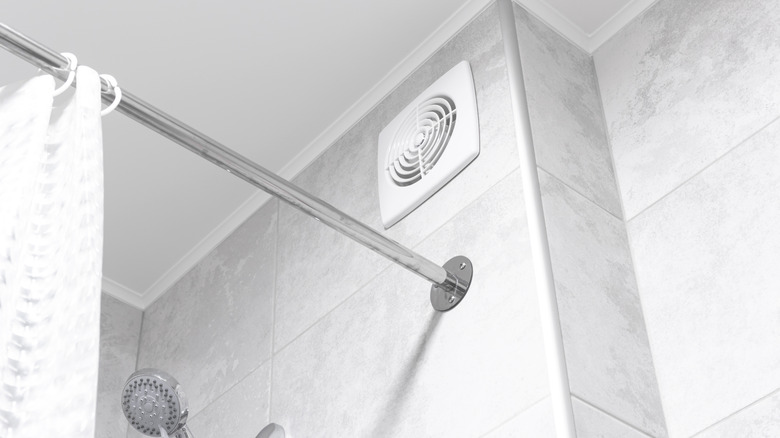Do You Need To Install An Exhaust Fan In Your Bathroom?
The bathroom is a part of the home that sees immense temperature and humidity changes on a regular basis. Every time someone in the house takes a shower, the air in the room is heated significantly by the hot water rushing through the showerhead and becomes saturated with humidity.
Exhaust fans are a typical sight in modern bathrooms to combat this effect. The changing temperature and moisture levels can damage paint or wallpaper, erode grout that holds tile firmly in place, and make the room slippery, among other issues (via Mr. Electric). But these fans are often loud and can only be operated alongside the light itself in many cases. This makes them a little less versatile than a homeowner might be hoping. The bathroom oasis is a space of relaxation and self-care. But with a noisy fan churning away in the background (sometimes when you just need the light and not the additional ventilation power), this can be hard to achieve. It leads some to contemplate alternatives to the exhaust fan. In truth, you do have other options.
The window loophole
To call it a loophole is somewhat disingenuous, but this part of the building code certainly reads like a loophole. In generations past, homeowners didn't have the ability to install ventilation fans in their bathrooms and instead used an open window to vent the warm, wet air from the room. This then became a stylistic or functional choice in recent decades. Yet, the option to vent your bathroom solely through an open window remains a part of the U.S. building codes (via Building Code Trainer). Specifically, you'll need a 3-square-foot window — at a minimum — with at least half of the measured area able to be opened. Any additional technical specifications you might need to complete this refit can be found in the ventilation requirements listed in section R303.3 of the building code.
While a window is an important feature in your bathroom, relying on one as a singular means of venting the space isn't likely to be a very good idea. The weather in most parts of the country can fluctuate wildly through the seasons and opening a window in the dead of winter won't be a very appealing necessity for most!
Still, ventilation must occur after you've heated the air and added moisture to the room. Mold can grow, potentially threatening the health of everyone in the home. Fortunately, the choice of ventilation tools isn't strictly a binary one.
Customizing the exhaust fan for your comfort
The short answer is: Yes, virtually all homeowners will need an exhaust fan installed in their bathroom. It may also be a good idea to install additional lighting, an openable window, and other features that can help make your bathroom a space of rejuvenation and relaxation, though.
One option that many homeowners should certainly entertain in their space is the use of separate wirings for the light and fan combination. Mood lighting is often a key feature in many spaces of the home — the bathroom included. But the overhead light in your bathroom is decidedly not calming, sensual, or soft. You may want to engage the fan without this light and use another source of illumination to set your room's mood to something more enjoyable. Similarly, a rushed morning routine may be made less chaotic without the hum of the fan above when it isn't needed.
Sparky Channel notes that wiring the two components of this combined installation to separate switches is actually a simple task. It's something that just about any homeowner can do. However, it's important to remember that you'll never want to work on an electrical device while it's live. Disconnect the fixture from your power source and then tackle the adjustment for maximum comfort. It may also be possible to install a separate exhaust fan, but if you aren't in the midst of a renovation already, decoupling the switching is your best bet.


